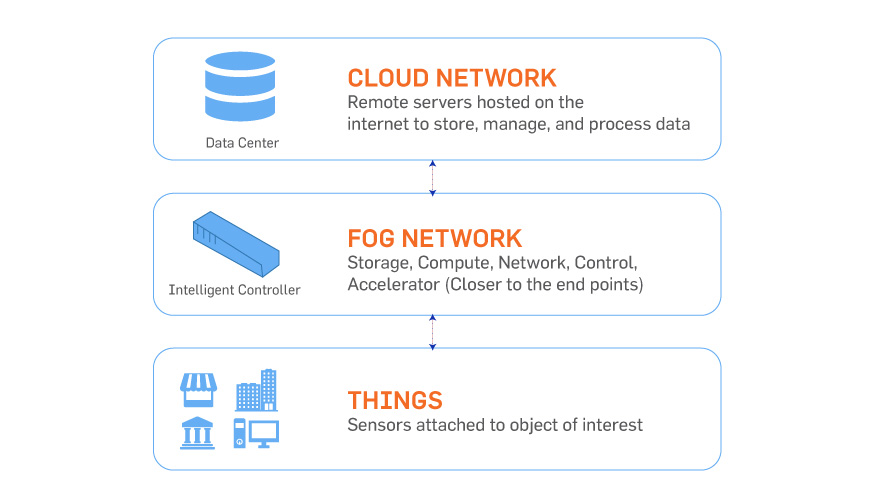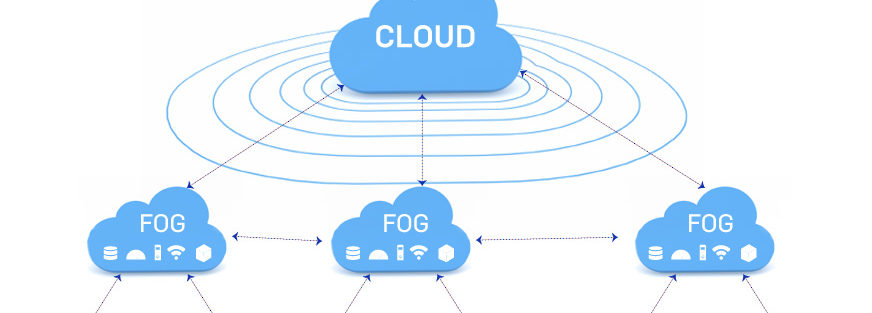Cloud computing has seen unprecedented adoption by global businesses as they move towards the new internet paradigm to become better connected. As a result, much innovation has been observed in the Internet of Things (IoT) space like smartphones, self-driving cars, e-surveillance, unmanned drones, etc. As time will progress, more “things” will get connected, largely by wireless technology, which leads us to one of the biggest challenges facing IoT i.e. bandwidth.
Understanding “fog”

The fog is an extension of cloud based computing. A horizontal, system-level architecture that distributes computing, storage, control and networking functions closer to the users along a cloud-to-thing continuum.
Fog enables us to build solutions around:
- Location awareness,
- Mobility,
- Wide geographical distribution,
- Low latency (delay for information to go from point A to point B), and
- Wireless access
Smart fog
Fog is not simply adding layers between the cloud and the surface. It will act as an enabler for smart IoT devices and the new capabilities it will make possible are:
- Sharing resources from one device to another
- Taking real-time decisions
- Contextual data (available locally) for customized intelligence enhancing user experience
- Autonomous networks that operate locally and can take decisions like save energy and network bandwidth, improve data security, reduce latency, etc.
- Streamline the online-to-offline processes by leveraging the physical proximity of customer for better authentication and cross-sell opportunities
E-surveillance and Fog
Surveillance cameras are being deployed worldwide by retail outlets, smart homes and cities, manufacturing enterprises, etc. in order to secure things, people and places. They are heavily relying on camera sensors to detect unauthorized entry, pilferage, safety, reliability and efficiency.
These cameras are capable of generating terabytes worth of information in a single day. Traditional cloud networks are unavailable to handle this massive information as they aren’t scalable and the sheer cost makes it unfeasible. Besides it is impractical to transfer all this data to the cloud to gain real-time insights.
Another point to consider is that security needs to be local. Real-time monitoring and detection of irregularities strictly needs low latency on surveillance systems; making timeliness paramount for both detection and response.
Fog deployments provide an opportunity to address the above concerns by moving the compute decision making device closer to the end point. We leverage fog architecture to crunch data closer to the end points and delivery the filter data relevant for trend analysis and forensics to the cloud
-By George.M.J., Sr.Vice-President-Information Technology



